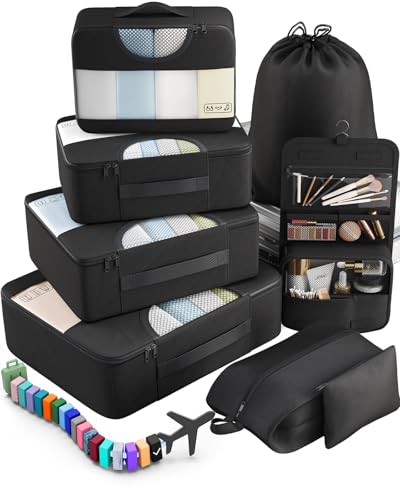In Sri Lanka, they use Type D and G power plugs and outlets. The voltage is 230V, and the frequency is 50Hz.
So, you’ll need a travel adapter in Sri Lanka. Their plugs and outlets are different from the Type A and B ones we use back in the States.
Quick Overview of the Plugs in Sri Lanka:
- Plug type in Sri Lanka: D and G
- Standard voltage: 230V
- Frequency: 50Hz
- Need a travel adapter? Yes, you do need a travel adapter
- Need a voltage converter? Don’t assume — check the power specs
- Recommended plug adapter: Vintar Universal Travel Adapter Kit
We’ve collected and double-checked this information using official power regulations from each country, global standards like the IEC, and firsthand experiences from travelers on the ground.
The Only Travel Adapter You’ll Need in Sri Lanka
Nothing is worse than running out of battery in Sri Lanka with the wrong adapter. We don’t sell them, but we’ve found the most reliable one—so you never have to worry about charging again:
Recommended Travel Plug Adapter
by 1,000+ travelers on Amazon
If you’re already traveling or have arrived at your destination without a power adapter, don’t worry. You can usually pick one up locally. Still, having one with you from the start is the easiest way to avoid delays or surprises.
People visiting Sri Lanka often also travel to India, Maldives, and Thailand. Always check which plug types you’ll need.
Power Outlets in Sri Lanka
In Sri Lanka, they use Type D and G power plugs and outlets.
Type D

Type D outlets have three large round prongs in a triangular layout and typically only accept Type D plugs, although Type C plugs might fit loosely and are not recommended for safe use.
Type G

Type G outlets have three rectangular prongs in a triangular layout and built-in fuses. Other plug types won’t fit without an adapter.
Do You Need a Voltage Converter?
Your electronics must match the voltage of the country you’re visiting, and in Sri Lanka, the voltage is different from the 120V we use in the U.S. That means you’ll probably need a converter.
Always check the power label on your device before using it abroad. If it lists “100-240V, 50/60 Hz”, your device is dual voltage and works with both 120V and 220-240V power sources without a converter. This applies to laptops, tablets, smartphones, cameras, and rechargeable toothbrushes.

Which Travel Devices May Need a Converter?
Play it safe with your electronics — browse the most trusted voltage converters here.
| Device | Need Converter? | Notes |
|---|---|---|
| Phone | ❌ No (usually) | Most modern phone chargers are dual voltage (100–240V) |
| Laptop | ❌ No (usually) | Check the power brick label for 100–240V |
| Hairdryer | ✅ Yes (often) | High wattage; many models are not dual voltage |
| Electric toothbrush | ⚠️ Check voltage | Some models are 110V only |
| Camera / DSLR | ❌ No (usually) | Most chargers are dual voltage |
| Power bank | ❌ No | Charges via USB, adapter is enough |
| Electric shaver / trimmer | ⚠️ Check voltage | Older or cheaper models may not support 230V |
| Tablet / iPad | ❌ No | All models are dual voltage |
| Portable fan | ✅ Yes (sometimes) | Many models are not compatible with 230V |
| Game console | ⚠️ Check voltage | Newer consoles like PS5 and Xbox are often dual voltage — check to be sure |
| Bluetooth speaker | ❌ No (usually) | Charges via USB |
| E-reader (Kindle, etc.) | ❌ No | USB charging only, no converter needed |
Top Travel Essentials to Pack
Packing smart means thinking ahead. These extras don’t take much space, but they can make your trip a lot more comfortable.
Digital Luggage Scale
Packing Cubes
Power Bank
More About Sri Lanka
Sri Lanka may look small on the map, but it packs in a massive variety of experiences. One day you’re hiking misty mountains in tea country, the next you’re watching elephants in the wild, then sipping a cold drink on a palm-lined beach. It’s like hitting three vacations in one trip—and it’s all within a few hours’ drive.
The island has something for every kind of traveler. History buffs will love the ancient cities like Anuradhapura and Polonnaruwa. Nature lovers can head to Yala or Udawalawe for safaris. And if you’re more into food and culture, the street snacks, markets, and temples won’t disappoint. Plus, the trains—especially the ride from Kandy to Ella—are experiences in themselves.
It’s easy to get around, locals are welcoming, and English is widely spoken. Whether you want to surf, hike, explore ruins, or just relax, Sri Lanka delivers—without the crowds you might find elsewhere. It’s the kind of place that makes you want to stay just a few days longer. Every time.
Top places to visit in Sri Lanka: Colombo, Kandy, Galle, Ella, Nuwara Eliya, Sigiriya, Trincomalee, and Negombo.




